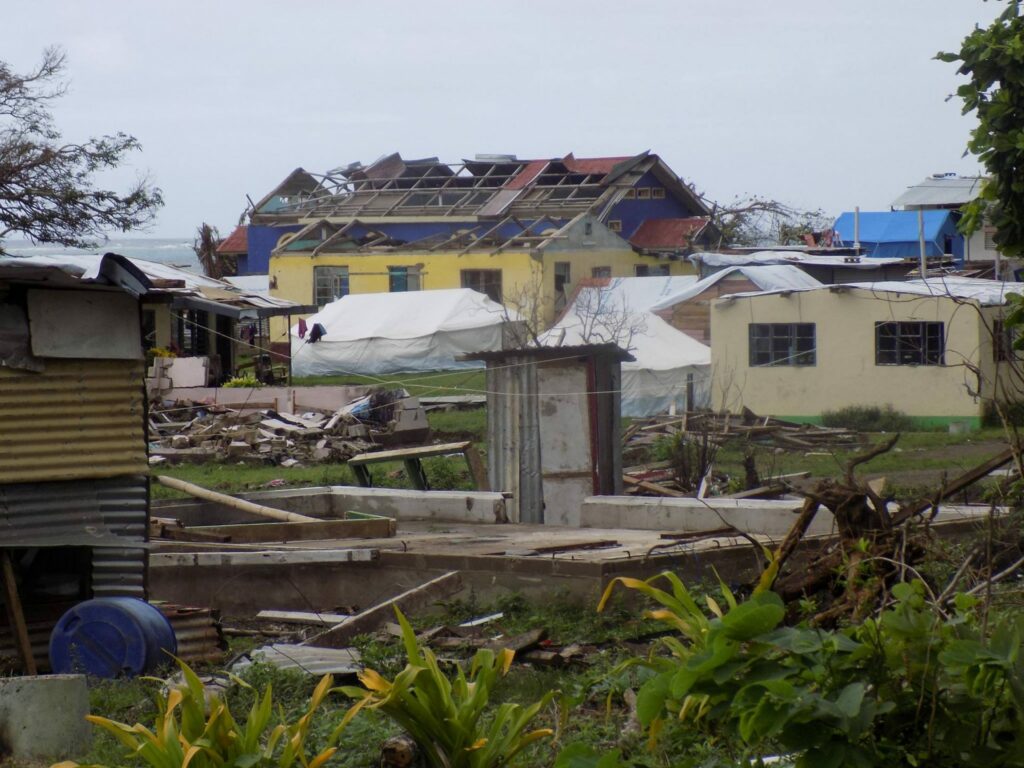
Climate in the Village
Fiji has a South Sea tropical climate and is very warm all year, with temperatures averaging 28 degrees Celsius.
Fiji’s ‘wet season’ or ‘summer’ is from November to April. This time of year receives the heaviest rainfall but also the hottest temperatures. The official ‘dry season’ or ‘Fijian winter’ is from May to October, when there is usually less rainfall, lower humidity and slightly milder temperatures. Typically, weather does vary somewhat depending on where you are in Fiji but you can almost guarantee, within the village, it will be hot and sticky.
Whichever time of year you are visiting Fiji, always prepare for high temperatures and pack high factor sun cream. It is also essential to prepare for tropical rain showers and ensure to pack a lightweight but good quality rain coat and some suitable footwear for muddy conditions. See below for our top tips:
In the Village
One thing to prepare for is rain! Due to Fiji being in the tropics, it is usual for there to be heavy downpours amongst hot sun during the day (usually in the afternoons). This means that during your time in the village, if there is a heavy period of rain, you can expect the village to become quite muddy. You may be reading this now and thinking that all sounds fine, but really consider preparing for this to be a challenge as after two weeks of heat, sticky weather and rain, it is completely acceptable to feel it is a challenge on top of everything else.
Because of this year round heat, most houses are constructed very simply to be airy and spacious with simple shutter-system windows that allow a breeze to draft through the house. Don’t be surprised if the front door is left wide open all day and security looks very basic to non-existent on the house itself, open door policy in a village means that there is an incredible amount of trust! These houses can get warm during the hight of day and it may be difficult to escape the so please be prepared for this and drink plenty of water.
Hand-woven mats on the floor do help the house remain cool and houses usually boast a few woven fans to help out if you just want to cool down!
Around the time of year that you will be visiting Fiji, the evenings will rarely ever drop below 18ºC. This means you will not need thick duvets or heavy duty bedding. Thin Sleeping bag liners are always a good option for this.

If, however, you are heading to the highlands, you can expect night-time temperatures to drop a little lower. It is not uncommon for fog to sweep through a village in the early mornings in the mountains so potentially think about bringing a couple of jumpers for the night, Fijian houses are built for heat!
Natural Disasters
During the time of year that the vast majority of our projects take place, cyclones, tsunamis or other tropical storms are very unlikely to occur; the dry season means that volatility of climate is far less extreme. In the wet season, however, due to Fiji’s geographic position, tropical cyclones and severe flooding are unfortunately common.
Although you won’t be experiencing these yourself, the after-math of these events can be clear to see in Fijian villages. Houses and other amenities are made with cheap materials in the anticipation that they may be rebuilt quickly in the event of a natural disaster. Rural buildings may be robust but built for purpose rather than luxury because of this.

Top Tips:
- Ensure you have a high factor sun cream
- Try, when possible, to stay out of the midday sun
- Pack a raincoat
- Pack suitable footwear for muddy conditions
- Pack at least x1 hoodie or jumper for cooler evenings
